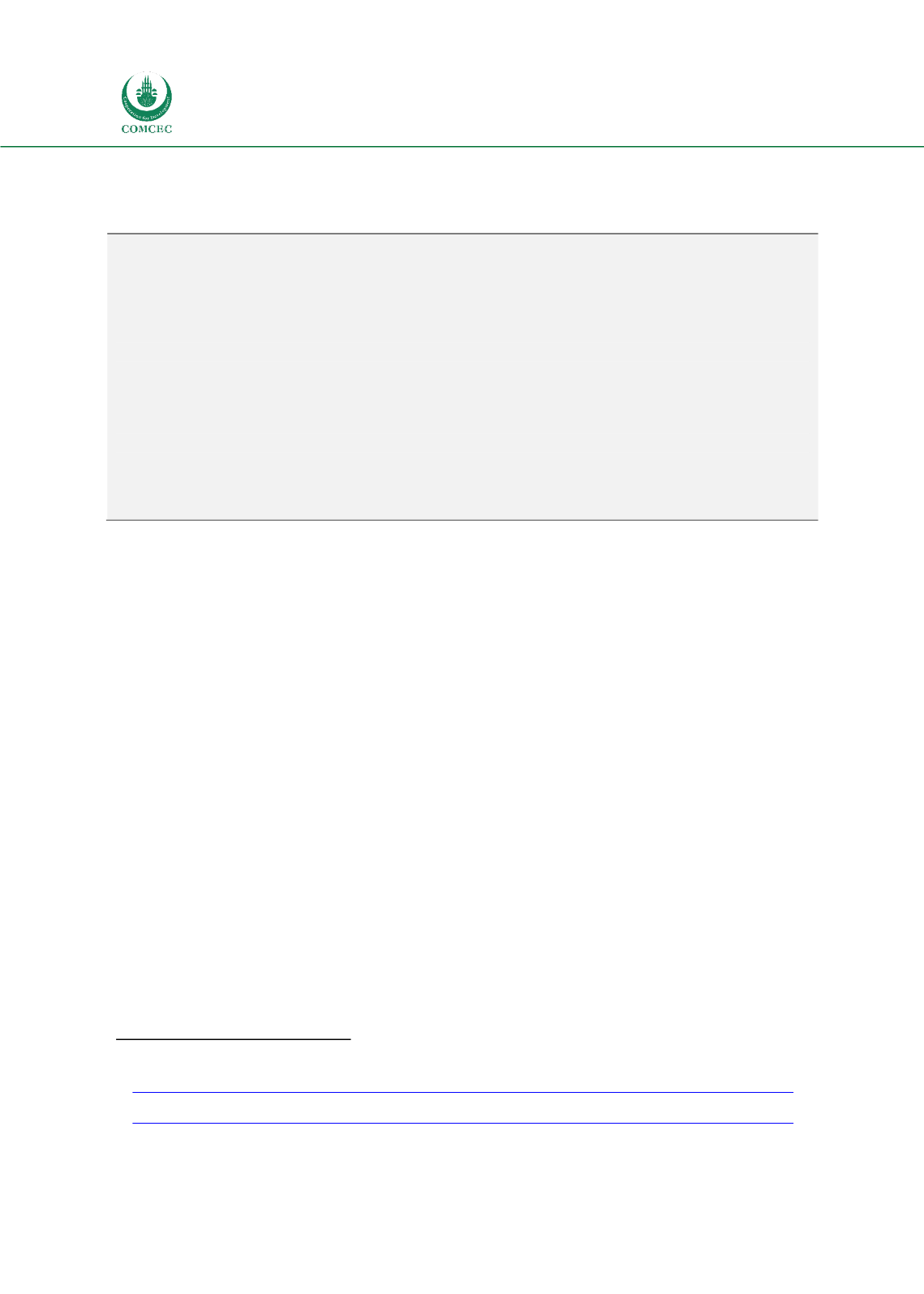

Improving the Border Agency Cooperation
Among the OIC Member States for Facilitating Trade
84
Towards a regional AEO program (WCO-EAC CREATe Project
148
)
First, the box below presents some background information on the CREATe project, from a
news release by the WCO.
149
Under the auspices of the WCO-EAC CREATe project on 9-10 June 2016, customs representatives from
EAC member administrations met with regional Authorized Economic Operators from Burundi, Kenya,
Rwanda, Tanzania and Uganda to identify ways to intensify cooperation and to discuss main challenges
in the roll-out of the regional AEO program. The consultations led to the agreement that a regional AEO
working group shall be established, which will include representatives of Customs, regional AEOs,
regional associations (East African Business Community, FEFFEA) as well as the EAC Secretariat. The
parties were also able to develop and agree on draft Terms of Reference for this regional working group
and decided that the regional working group’s launch and first official session shall take place no later
than the end of October 2016. The consultations also allowed represented Customs to take note of the
challenges experienced by the regional AEOs at key border posts. Customs and the regional AEOs agreed
to address these key challenges through a collaborative and results-oriented approach in the upcoming
weeks. A critical issue identified was the absence of a specific identifier in Customs IT systems in the
region for the “Regional AEOs”. This working session, which took place in Kampala, Uganda, was opened
by the Assistant-Commissioner Customs from the Uganda Revenue Authority and was funded by the
Government of Sweden.
150
The current progress and status of the regional AEO programs is the following:
151
There are 13 operators with the regional AEO status today, three of them Ugandan;
the target is to have a minimum of 50 regional AEOs by 2018.
Customs AEO validation teams are on national level (e.g., Ugandan customs is doing
the validations for Ugandan companies), using regional AEO schemes in their
validations.
The five countries are finalising standard operating procedures (SOPs) for the detailed
functioning of the common AEO program.
One of the main gaps observed during the pilot phase (2013-14) was that IT systems
had no regional AEO identifier – this will be solved by March 2017.
The second gap identified during the pilot phase is about missing self-assessment
explanatory notes – this is also being addressed now.
Benefits of the regional AEO status include the following (with some country level
discrepancies – the goal is to have a full harmonisation by 2018):
o
Priority treatment in the clearance systems and at the borders and dedicated
service at release points,
o
Exemptions from physical and documents examination (except random
inspections),
o
Waiver of ECTS requirements,
o
Waiver of movement bonds (only when transporters, importers and brokers
all are regional AEOs) and
o
Priority to participate in any customs modernisation activity, e.g., single
window system launch.
148
WCO-EAC CREATe project is implemented by the WCO and EAC Secretariats jointly - project being funded by the
Government of Sweden.
14
9 www.wcoomd.org/en/media/newsroom/2016/june/successful-customs-to-business-engagement-on-the-rollout.aspx(accessed 10 June 2016).
15
0 www.wcoomd.org/en/media/newsroom/2016/june/successful-customs-to-business-engagement-on-the-rollout.aspx(accessed 10 June 2016).
151
WCO expert interview, 2016
















